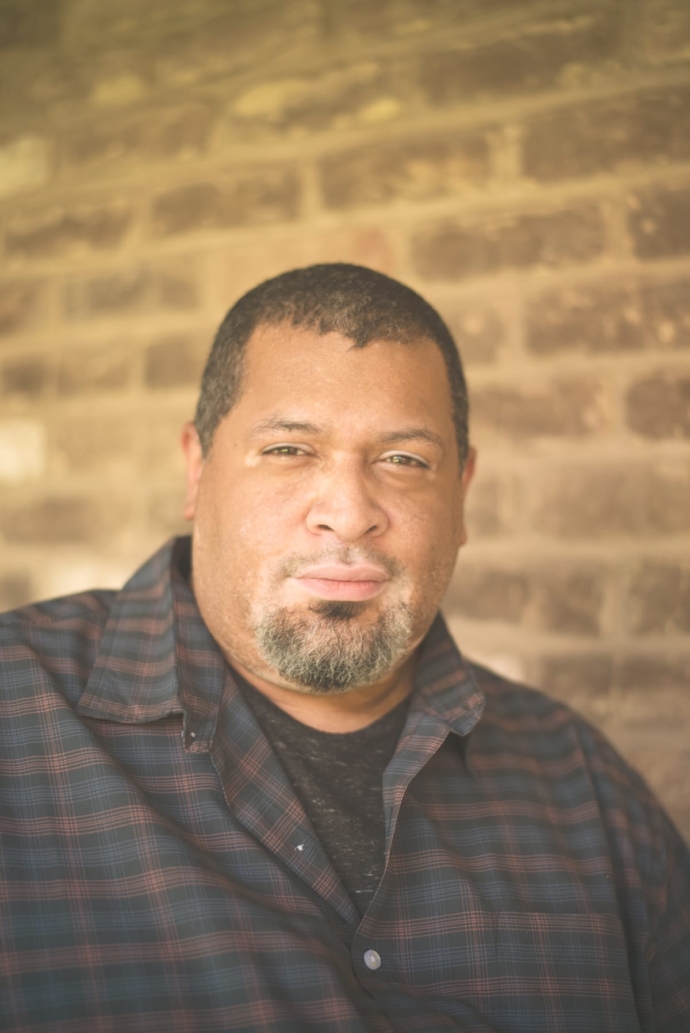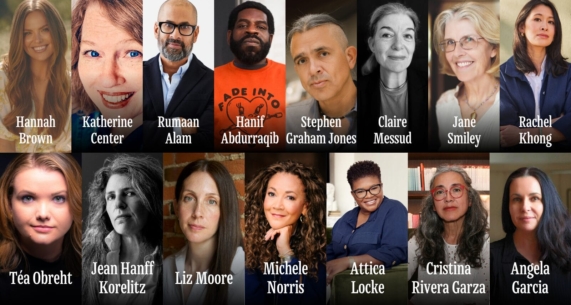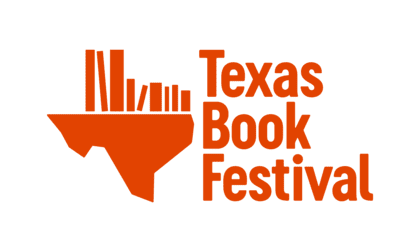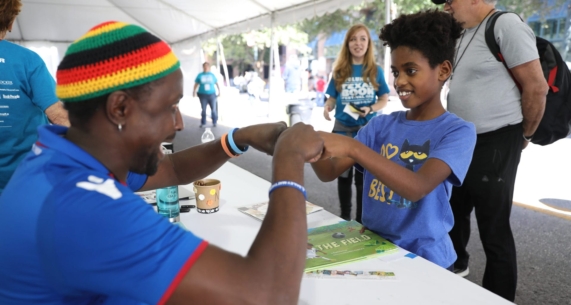Every year, the TBF selects a piece by a Texas artist to represent the Festival Weekend and to celebrate the arts in Texas. It’s a tradition that began in 1998, and through the years, we’ve been lucky to highlight works of acclaimed artists such as Lance Letscher, Julie Speed, Randal Ford, Keith Carter, Kate Breakey, and Jack Unruh.
Now, we are proud to unveil the official 2019 Festival Poster: “Burgeoning,” a mixed-media digital collage by Austin-based artist and graphic designer Dave McClinton. “Burgeoning” will be featured on this year’s Festival poster and will represent our 2019 Festival Weekend.
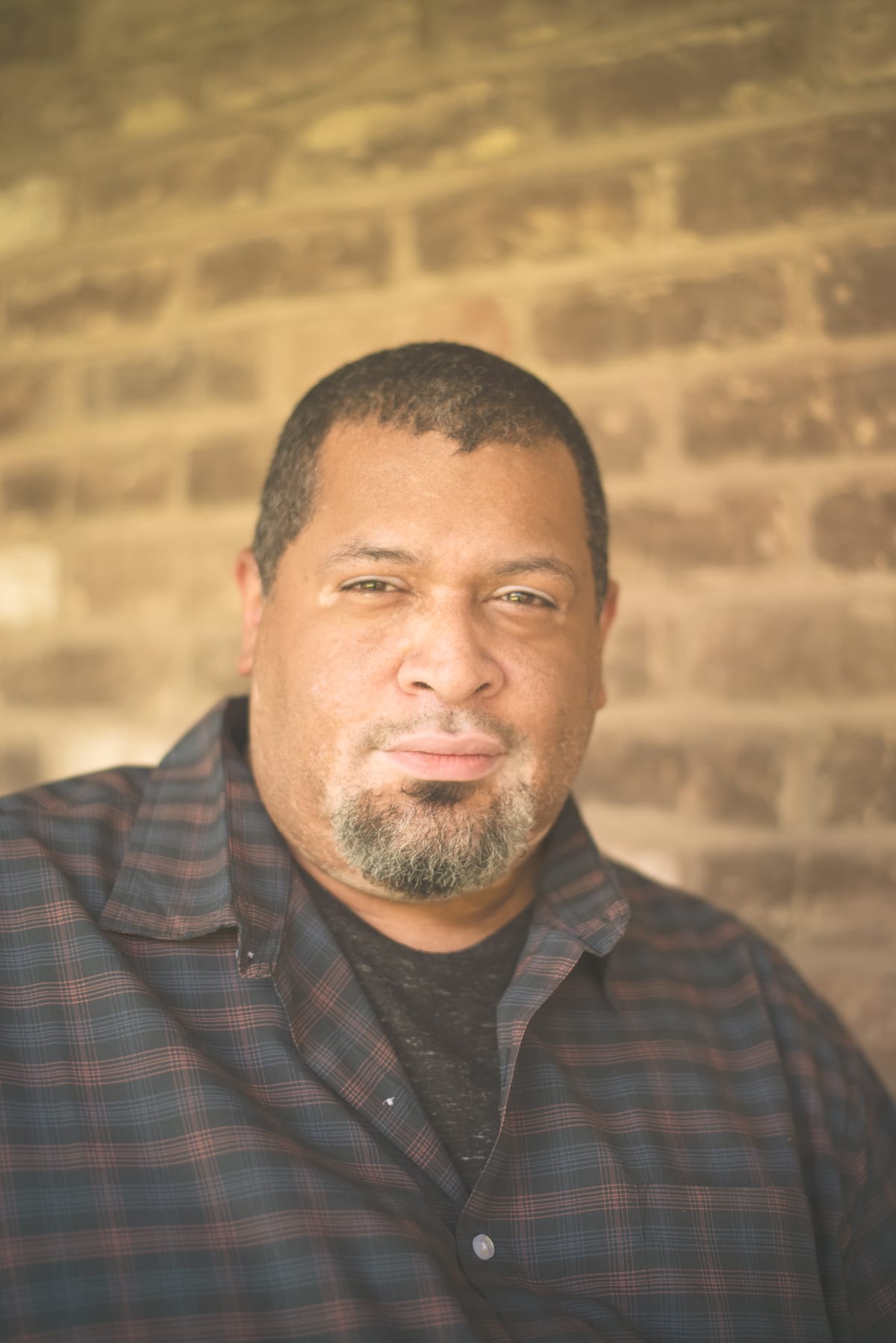
photo credit: Arius Holifield
McClinton, who moved to Austin in the 1990s and has lived here since, has worked as a professional graphic designer for twenty-five years. His vibrant, provocative style makes use of photography, portraiture, historical American documents, and textures found in everyday life.
McClinton says that, while he’s been a professional designer for more than two decades, he did not begin making his own art until just a few years ago.
“When I chose to study graphic design over studio art in school, I always thought in the back of my head I’d come back to [my art] eventually. But next thing you know, twenty years had gone by.”
In 2015, McClinton saw a call for submissions to participate in one of the West Austin Studio Tour stops and submitted.
“The next thing you know, I was printing and framing my art, and having it shown. It was a really quick, sudden thing. . . . Ever since then, I’ve been throwing myself into it full force, having found my way back into the art world.”
When asked about his influences and growth as an artist, McClinton says he loves creating and making art first “for the pure beauty of it.”
“I like making things that look nice, I do,” he says, “but what really solidified the impulse for me, what really took off is the essential purpose, the message that might be behind the artwork. Some of that messaging has been creeping into the landscapes, like ‘Burgeoning,’ as well as my more socio-political work.”
The art for this year’s poster, Burgeoning, is a collage made from wrinkled paper, photographed and rendered as a mountain landscape. The idea for McClinton’s crumpled paper series was sparked when he noticed the discarded gift wrapping on his kitchen table looked like a miniature mountain sculpture. He then began collecting different types and weights of paper and sculpting mountainous piles of these crumpled papers, which he then photographed from every angle to edit and create the final works.
“I enjoy the process, I enjoy the making of it,” he says. “Crumpling, twisting the paper— the physicality of it is very cathartic.”
McClinton says the reception of the series has been positive, and in some cases, personal. He recalls many viewers coming up to him and trying to guess which mountain range different works depicted, saying they were sure they’d seen the same peak close to their childhood home or on a memorable vacation.
“I get these people that see them and say, ‘Oh that looks like the Flatirons,’ or ‘That’s Long’s Peak,’ or, ‘Oh that’s Half Dome, right?’ The final art is digital, but the first step is making these sculptures with my hands, and I enjoy this notion of giving someone a view of a place they’ve never been, they couldn’t possibly have been there, but they see something in it, and it recalls these memories for them. People see these paper mountains and remember their own narratives and stories from their lives.”
Many of the works in the series feature crags and peaks of brightly colored paper, but for some, such as with “Burgeoning,” McClinton has begun to integrate words and text into the materials of the mountain sculptures as well. As with many of his other works that include text and documents in the collage, McClinton researches and prints old documents and publications pertaining to the history of slavery and racism in America. He says he knows that for readers, storytelling is an important aspect of books and reading, and with his artwork, he’s taking narratives and making them a visual representation, a record of these voices.
“The image is what I’m focusing on, the metaphor. . . In most of these, you can’t see specifically what’s written there, you can see some words but not all. The thing I like about that is the curiosity viewers will have. If you’re going to a book festival, I’m guessing you’re an avid reader, so I’m sure people will be curious to piece together these words and the meaning behind them.”
The historical trauma of slavery and ongoing narrative of racism in America is the subject McClinton engages with often in his art, and many of his works combine text and portraiture, depicting both images of people today and from America’s past. However, he finds the imagery of a striking, craggy mountain range to work just as well in exploring this issue.
“Mountains are naturally created over thousands of years, but when you think about it, a mountain’s birth is an incredibly violent act, two plates of land slamming together and erupting into this jagged scar on the face of the Earth,” he says. “It’s not a huge metaphorical leap to say that our history of slavery and racism in America is this huge, monumental, mountain-range-sized scar on this country’s past. So, on the one hand, I want people to say, ‘oh, look at this beautiful mountain’ but on the other, I want to talk about the monumental, painful scar on our history that slavery was, that racism still is.”
McClinton cites American designer, artist, and architect Maya Lin, who designed the Vietnam War Veteran’s Memorial, which also evokes the imagery of a long, deep scar. When asked about his other influences and favorite artists, he laughed and wondered if he could even name a fraction of them.
“There’s too many to mention,” he says. “I like the graphic nature of Jean-Michel Basquiat, I like the graphic nature of Keith Haring, there was a woman named Nancy Spero. She would do things where she would draw the shape of a body or of a face, and use that over and over again, almost like it was a rubber stamp. She’d put them in different settings and give them different colors and different textures, so they weren’t identical, but they were still the same profile of a face, the same profile of a body, and she used it to great effect to tell her story. When I saw her work, I realized I was kind of doing the same thing and I thought, ‘well, if this woman who’s been doing art for seventy-five years and that was good for her, then that was good for me.'”
McClinton also details his long admiration for artists such as Carrie Mae Weems, Lorna Simpson, Glenn Ligon, Vincent Valdez, and keeps going—as any reader knows when asked to name their favorite author, there are always too many to name.

